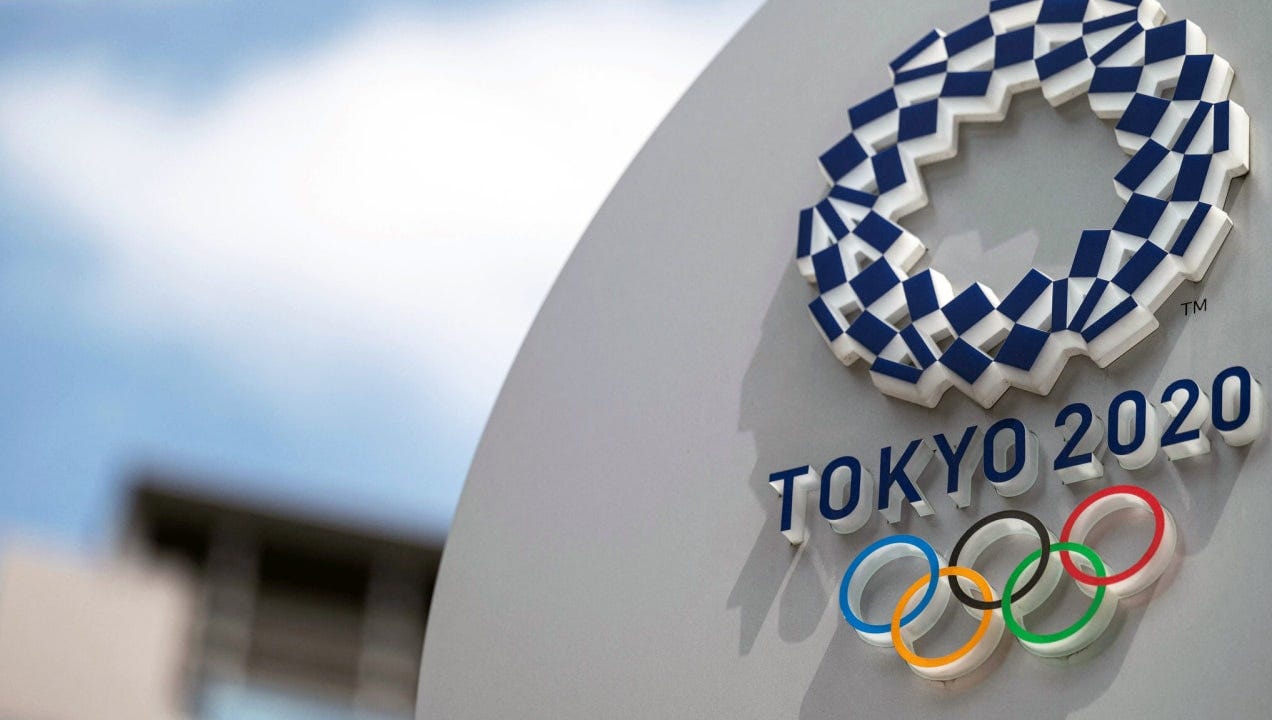22 hours and a very important vial of spit: One Olympic reporter's journey to Tokyo

TOKYO — After flying halfway around the world, I found myself in a partitioned area at Haneda Airport, exhausted and confused, staring at a picture of a lemon.
I had arrived in Tokyo to cover the Summer Olympics for Paste BN Sports. And after being ushered up and down long hallways, and through various checkpoints, it was time for me to take my ever-important COVID-19 saliva test before being permitted to leave the airport.
A Tokyo 2020 staff member ushered me into a small space, about the size of a phone booth. I'm guessing the picture of the lemon taped to the wall was supposed to help me generate enough saliva for the test. Sadly, after a 12-hour flight, it didn't help much.
Wade Alberts, a sports massage therapist who is part of Team USA's delegation, had been on my flight and was now exiting an adjacent booth. "Like a champ!" he said, with a vial of spit in his hand. Eventually, I joined him in a section of seats in another part of the airport, where we waited for our tests to be processed.
The journey to get to this point, mind you, was hardly straightforward. Though the absence of fans at the Olympics and the COVID-19 protocols for athletes have gotten most of the spotlight, it's important to remember that the Games are a massive logistical operation with thousands of other participants in various capacities – coaches, officials, medical staff, support staff, volunteers and, of course, us in the media. And all of us are subject to strict COVID-19 protocols put in place by Olympic organizers and the government of Japan, where about 20% of the population is fully vaccinated.
Before entering the country, for instance, everyone has to get two nasopharyngeal COVID-19 tests – the long nasal swabs that were more common early in the pandemic. One test must be taken within 96 hours of your international flight's departure, the second within 72 hours.
For me, that meant my journey to Tokyo really started Monday morning, at a nondescript office building in a suburb of Washington D.C. "I'm sorry," the woman at the lab deadpanned as she pushed a swab further up my nose than I thought physically possible. (Editor's note: I'm not sure she was really sorry.)
Then it was back to the lab Tuesday for Test #2, and again on Wednesday, to ensure that lab officials correctly filled out the Japanese forms that would later serve as evidence of my negative results.
Pre-flight testing is just one of the measures in place, of course. We in the media are required to submit a written list of locations where we'll be during our stay in Japan, called an activity plan, which is then recorded and approved by organizers. We also have to download an app that tracks our location at all times, in case the government needs to know where we are or were for contact tracing purposes.
With all of those boxes checked and all of my bags packed, I left my apartment in downtown Washington D.C. just before 8 a.m. local time on Thursday and arrived in Tokyo at around 3:30 p.m. local time Friday.
And then I really started to see Japan's COVID-19 protocols in action.
After landing at Haneda, the mostly-American contingent from my flight joined other Olympic stakeholders in a wing of the airport, snaking through hallways and past airline gates as our documents were checked in various combinations, over and over again. I was asked to show a QR code generated by one of the apps at least a half dozen times.
The Tokyo 2020 staffers were friendly and kind at every turn, however – and extremely patient as many of us fumbled with various documents.
All told, I found the process of entering Japan to be both extremely thorough and relatively smooth. About an hour after landing in Tokyo, folks from our flight were temporarily quarantining as our saliva tests were processed, sitting in a socially-distanced waiting area alongside officials from Italy, Chile, Great Britain and others. A little more than an hour after that, I was on a bus and then a taxi to my hotel.
With COVID-19 cases rising in Japan and the highly-contagious delta variant continuing to spread around the world, we have already seen positive cases among the early arrivals at the Olympics. We will surely see others. But the process I went through to enter the country does give me some confidence, that Japan's protocols will limit the spread of COVID-19 related to the Olympics – even if they cannot eliminate it completely.
As a media member, I'll be required to take another COVID-19 saliva test tomorrow. Likewise for Sunday and Monday. After that, it'll be one test every fourth day. Maybe I'll give the lemon photo thing another go. I've got a lot of tests still ahead of me.
Contact Tom Schad at tschad@usatoday.com or on Twitter @Tom_Schad.